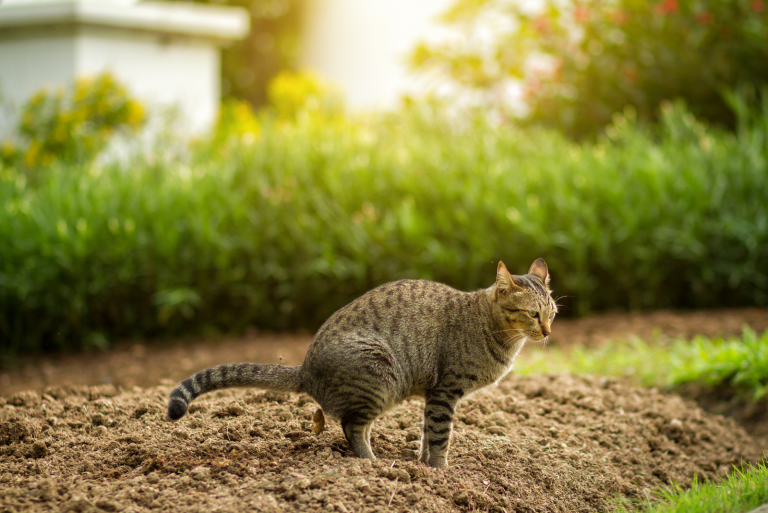6 Massive Animals That Still Roam Free In Montana
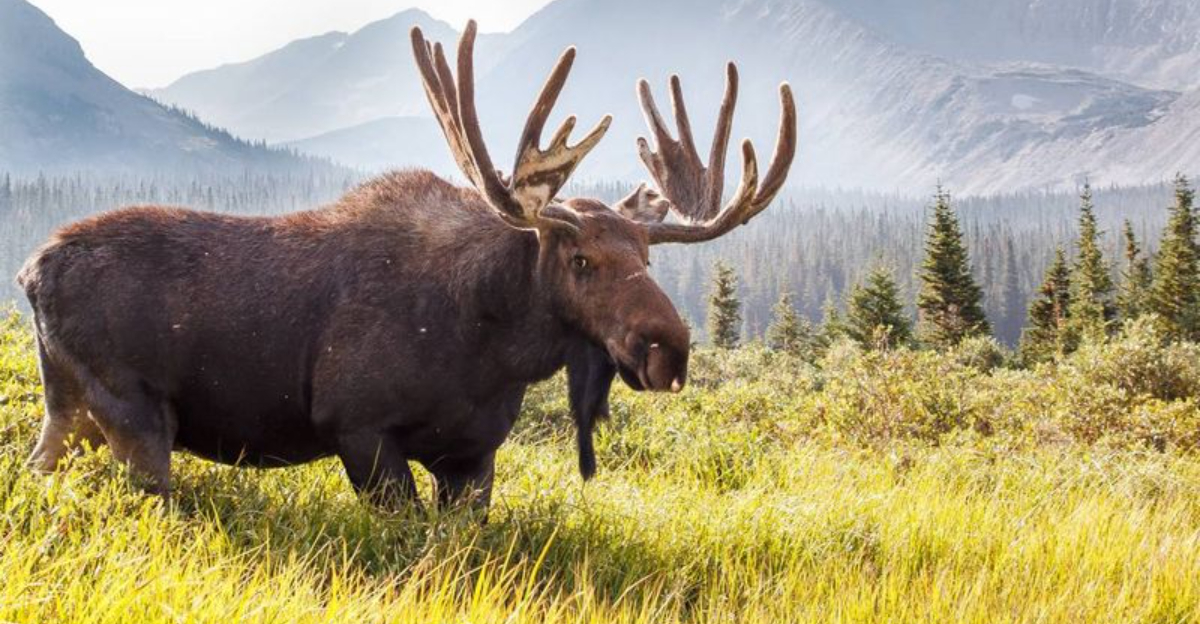
Montana’s wild landscapes harbor some of North America’s most impressive creatures. From towering herbivores to stealthy predators, these animals represent the untamed spirit of Big Sky Country.
While many large mammals have disappeared from other states, Montana still provides crucial habitat for these magnificent beasts, offering wildlife enthusiasts rare glimpses of nature’s giants in their natural settings.
1. Grizzly Bear
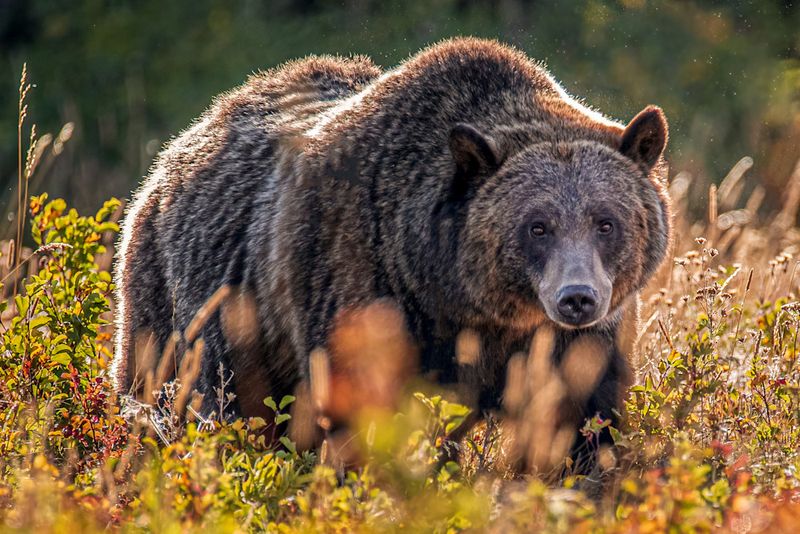
These massive bruins command respect throughout Montana’s wilderness. Adult males tip the scales at 800 pounds while moving with surprising speed, up to 35 mph when motivated.
Grizzlies thrive in Montana’s diverse habitats, from dense forests to alpine meadows where they dig for roots and forage for berries. Their distinctive shoulder hump and dish-shaped face make them unmistakable.
Protected under the Endangered Species Act, approximately 2,000 grizzlies now roam the Rocky Mountains – a conservation success story, though human-bear conflicts remain a challenge in expanding territories.
2. American Bison
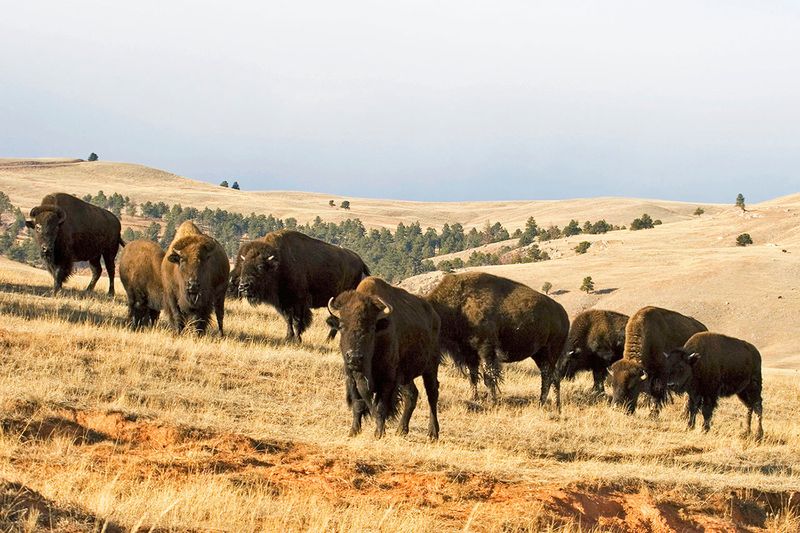
Weighing up to a ton, these woolly behemoths once nearly vanished from Montana’s plains. Their massive heads, shaggy coats, and surprising agility make them both magnificent and dangerous – never approach one in the wild!
Today, visitors can witness free-roaming herds at the National Bison Range near Moiese or throughout Yellowstone’s expansive meadows. During summer, calves with rusty-orange coats frolic alongside their massive parents.
Montana’s relationship with bison represents a remarkable comeback story. Once reduced to mere dozens nationwide, these icons of the American West now symbolize wildlife conservation at its finest.
3. Moose
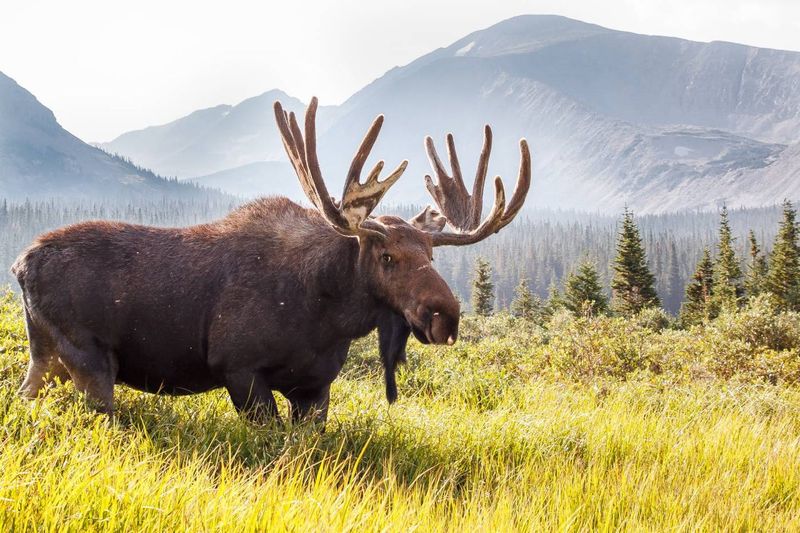
Standing over 6.5 feet tall at the shoulder, bull moose dominate Montana’s wetlands with their imposing antlers spanning up to six feet across. These solitary creatures prefer marshy areas and lakes where they feed on aquatic vegetation.
Glacier National Park offers prime moose-spotting opportunities, especially during early mornings. Despite their massive size, bulls can weigh 1,500 pounds, these giants move with surprising stealth through dense forest.
Don’t let their seemingly docile nature fool you! Moose can become aggressive if threatened, particularly mothers with calves. Wildlife experts recommend keeping at least 50 yards between yourself and these magnificent woodland giants.
4. Elk
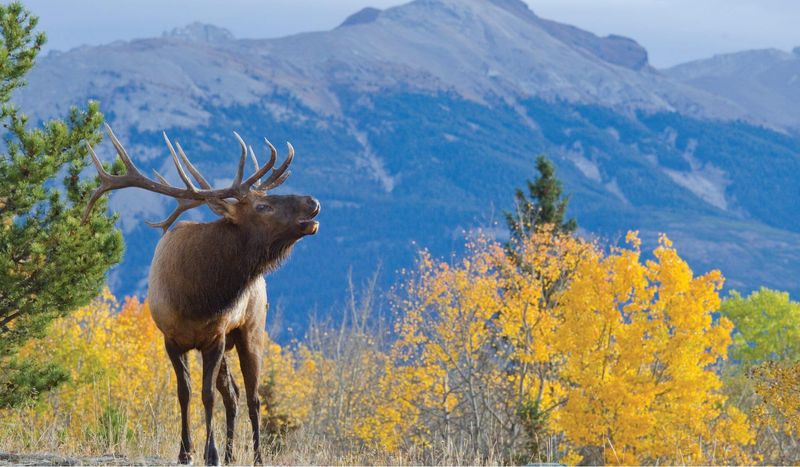
Fall in Montana brings the haunting sound of bull elk bugling, an eerie whistle that echoes through mountain valleys during mating season. These impressive creatures gather harems of females while fending off rival males in dramatic antler clashes.
Bull elk can reach 700 pounds, sporting magnificent antler racks that regrow annually. Their reddish-brown summer coats transition to grayish-tan for winter camouflage in Montana’s changing landscapes.
The best viewing opportunities occur at dawn and dusk when herds emerge from forests to graze in mountain meadows. Montana’s healthy elk population thrives thanks to conservation efforts and the state’s abundant protected wilderness areas.
5. Mountain Lion
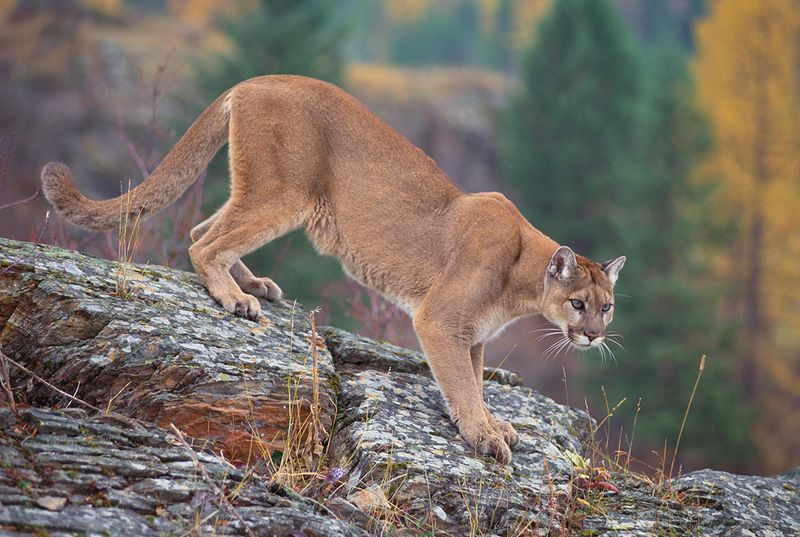
Few Montanans ever glimpse these elusive cats despite sharing landscapes with them. Stretching up to 8 feet from nose to tail tip, mountain lions silently patrol territories spanning hundreds of miles across Montana’s diverse terrain.
Masters of stealth, these tawny predators can bring down prey several times their size. Adult males typically weigh between 100-200 pounds, with powerful haunches that enable 15-foot horizontal leaps and 40-foot vertical jumps.
Montana’s mountain lion population has rebounded significantly thanks to careful management. While extremely rare, encounters require caution. Wildlife officials advise making yourself appear larger and backing away slowly rather than running.
6. Bighorn Sheep
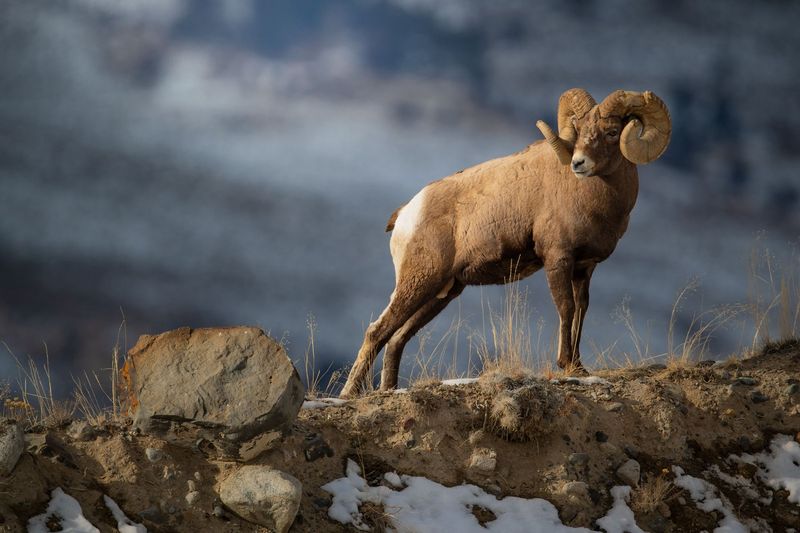
Montana’s rocky cliffs host one of nature’s most impressive athletes. Male bighorns develop massive curled horns weighing up to 30 pounds – more than all the bones in their body combined! These specialized climbers navigate near-vertical terrain that leaves predators far behind.
Rams battle for mating rights by charging each other at speeds of 20 mph, their skull architecture specifically evolved to absorb these tremendous impacts. Herds frequently gather in Glacier National Park, where visitors watch in awe as they traverse seemingly impossible slopes.
Conservation efforts have helped bighorn populations recover from historic lows, though they remain vulnerable to respiratory diseases. Their incredible adaptation to Montana’s harshest environments makes them living symbols of wilderness resilience.






